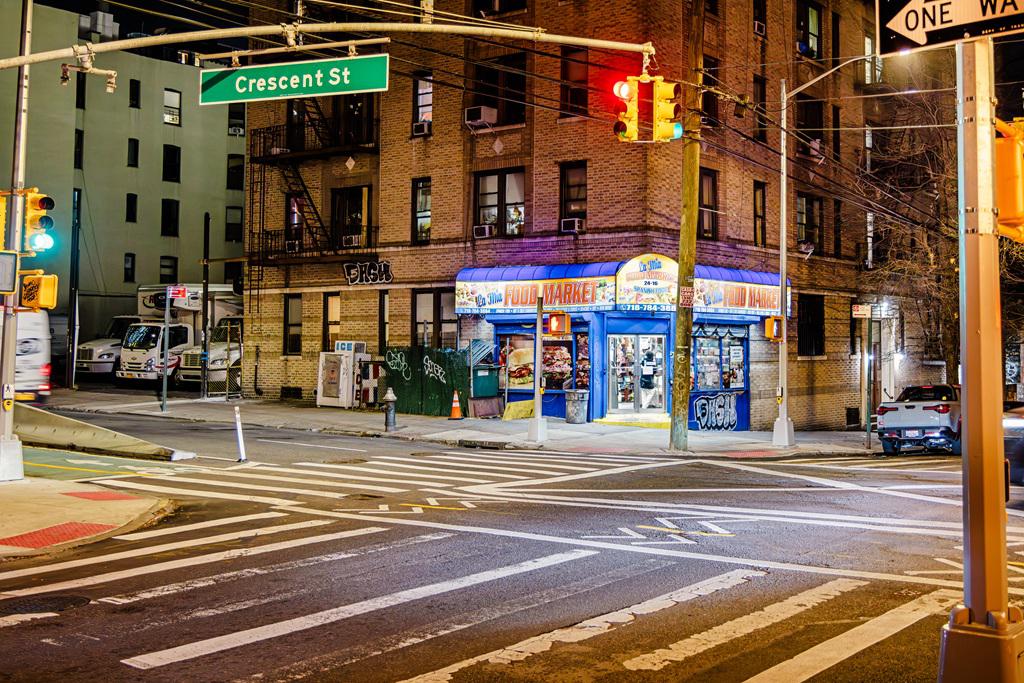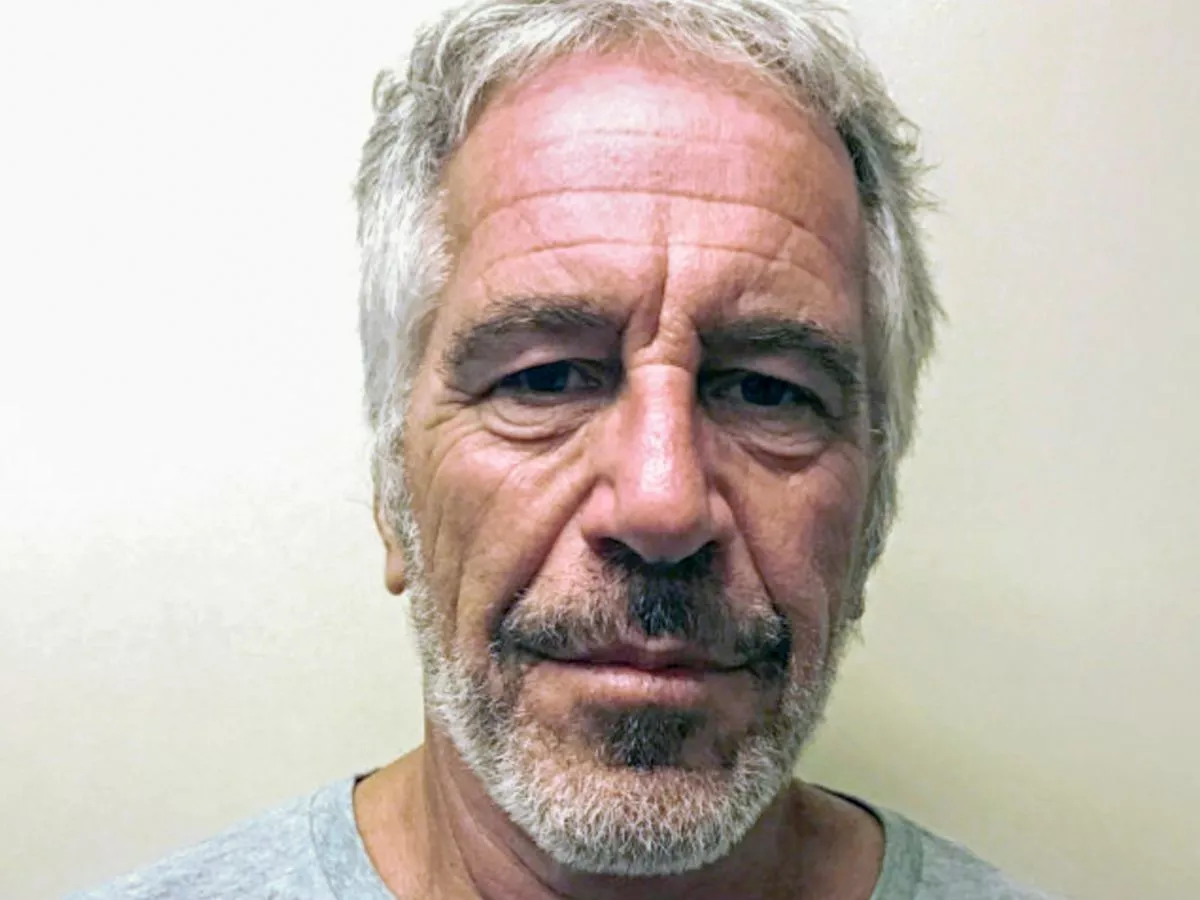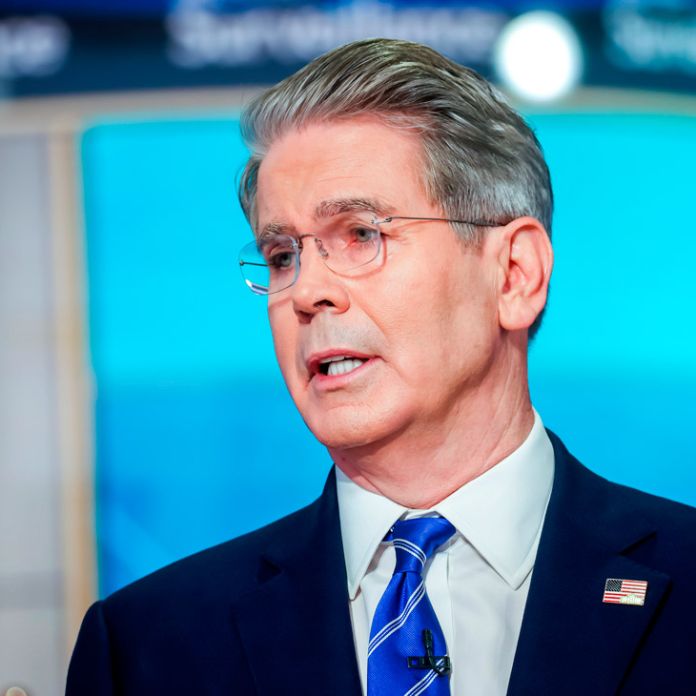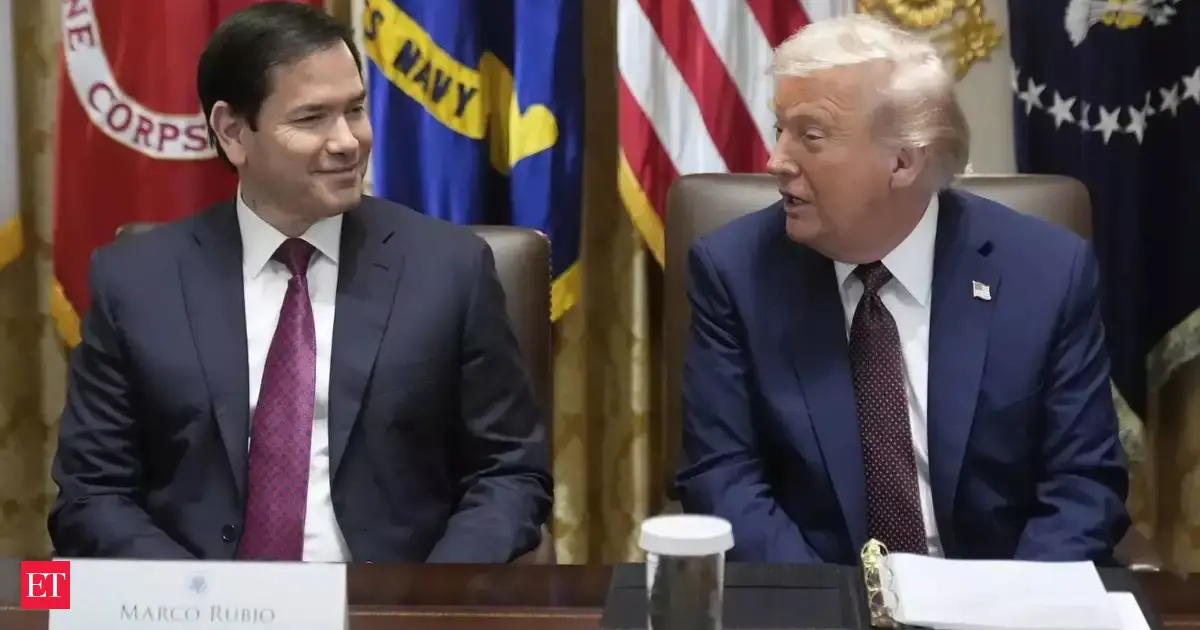By Emma Janssen
Copyright prospect

This article appears in the October 2025 issue of The American Prospect magazine. Subscribe here.
One of the more intriguing kitchen-table economic proposals from New York City mayoral candidate Zohran Mamdani is a pilot program for five city-owned grocery stores. Like his other ideas in his platform (free buses, rent freezes), public groceries aren’t a new invention. But New York City would be the largest municipality to test them, and all eyes would be watching to see if they succeed.
The logic behind city-run grocery stores is simple. Privately owned grocery stores have to turn a profit, so they mark up their goods. City services don’t need to make a profit. So a city-run grocery store could sell goods at lower prices.
Perhaps more importantly, public groceries can prevent food deserts, which the USDA defines as any low-income community ten miles or more from the nearest grocer (in cities, it’s one mile). Both rural and urban food deserts have seen independent grocers gutted while giants like Walmart, Kroger, and Aldi rise. Public grocers can bring fresh food options to communities that corporate groceries don’t consider profitable.
Several cities are testing the public grocery model, from Madison, Wisconsin, to Kansas City, Missouri. But many of the examples are in rural areas, and often in red states. Food deserts proliferate in rural America, and small-town governments are more flexible than the 306,000-person city government of New York City. They can innovate without wading into a multiyear bureaucratic process first, like in Chicago, which floated the idea of a public market but hasn’t yet followed through on it.
Take Little River, Kansas, a town of 472 people. There had always been a grocery store in this community; whenever one owner retired, they passed the responsibility on to someone else. But in the 2010s, the Nelsons, who owned and operated the store, started to feel the financial stress of maintaining decades-old freezers and refrigerators. The city bought the building and took responsibility for maintenance costs. When the Nelsons retire, the city will just need to find new operators, keeping the town fed. At least three other Kansas towns—Erie, Caney, and St. Paul—have public groceries as well.
Not all public groceries have succeeded; the Kansas City store had chronically empty shelves before closing this August. That has much to do with the inability of groceries with small inventory needs to win the same deals from suppliers as the industry’s giants. A law that made special pricing for big chain stores illegal nearly a century ago has been barely enforced in recent decades. But adding New York City’s muscle to demand fair treatment for noncorporate grocers could change the game.
Different Models
Some municipalities have experimented with entirely publicly owned and operated models, while other stores are co-ops or nonprofits. Sean Park, a program manager at Western Illinois University who works with independent grocers, sees the municipally owned, privately operated model (like Little River’s) as one of the most promising. At their best, these public-private partnerships take the administrative support of a city and combine it with the fast-moving entrepreneurship of a business owner. The model also sidesteps the need for cities to learn how to become grocery store operators.
Cities often take a role in real estate, constructing and leasing the grocery building to its operator. Cities can also provide the initial funding needed to get off the ground and lower the rent for the first few crucial years. From the operator’s perspective, Park explained, having the city available to absorb the shock of those early costs can make all the difference. Cities also win: When issuing a bid for an operator, they can choose what to prioritize, whether it be years of experience or entrepreneurial creativity.
A law already on the books could transform the grocery industry by leveling the playing field for small stores.
Most important, the city gains certainty, said Park. “That community can never lose the grocery store. They can lose the operator. But so often, with Walmarts and Dollar Generals, when they close up their stores … [they] just sit there in probate as an eyesore.”
A municipal grocery with private operators creates an opening for a local small-business owner to invest and grow in the community. An entrepreneurial model can broaden the appeal, particularly for those on the right who might balk at the idea of government entering the grocery business.
Rial Carver, the program director of the Rural Grocery Initiative at Kansas State University, suggested that local governments tend to be better suited as grocery store funders or landlords rather than operators. “It can really be the best of both worlds,” she said. “You’re able to leverage partners and also leverage interest in this concept of having access to healthy food, but also not forcing anyone out of their comfort zone.”
Atlanta recently announced a public-private partnership with Savi Provisions, a small chain of community markets that is already established in the area. The city’s development agency will award Savi Provisions $8.2 million to build two stores in neighborhoods that had been left behind by other grocers. Savi Provisions CEO Paul Nair said that they hope to keep costs comparable to Kroger, even if that means that they won’t be making a significant profit.
Disadvantaged Independents
Park is skeptical that a grocery store both owned and operated by a city would be successful, due to the bureaucratic nature of city governments. “Because it’s such a tight margin, any addition of bureaucracy or cost is just not going to be profitable,” he said. If purchasing decisions must go through multiple levels of city approval, stores could miss out on attractive options and struggle with management.
Carver also questioned a city-owned and -operated grocery. “I think that the traditional municipal grocery model [where the city owns and operates the store] is a little less known, less established, so I think that a local government would really want to do their due diligence … before stepping in,” she said.
Criticism of Mamdani’s proposal has typically fallen along those lines. But that argument misidentifies the real issue. It’s not that all public grocery stores are inherently doomed to fail, but that the grocery industry is structured against all independent grocers, whether they’re public or not. The grocery industry experts I spoke to identified market consolidation as likely the biggest issue facing independent grocers today.
“Walmart specifically precipitated this big change in grocery competition,” explained Claire Kelloway, the food program manager at the Open Markets Institute. She accused Walmart of “bullying, bludgeoning, ruthlessly negotiating with suppliers, because they have access to this market that is so big, and suppliers really can’t afford to not be on Walmart’s shelves.”
To ensure they get on those shelves, distributors will often give massive discounts to Walmart and other large grocers. Those discounts get passed along to customers, which is why it’s practically always cheaper to shop at Walmart than your local mom-and-pop market. While I love the tiny grocery store on my street in Chicago that sells locally grown produce, for example, it’s much more economical for me to bike to the huge Jewel-Osco, a chain owned by Albertsons, in the next neighborhood over.
Independents struggle to work with distributors that deliver goods to stores, said Carver. “In a rural area … sometimes it’s hard to get a wholesale supplier to even service your store,” she said, because it’s so far from their base. In urban areas, a wholesaler might see a small grocery as not worth their time. Even if independents can source goods, the price could be steep.
A look at a grocery funding initiative in Illinois, the Fresh Food Fund, shows how hard it is to get small grocers off the ground, even with robust government support. A 2024 ProPublica and Capitol News Illinois investigation found that only two grocery stores out of the original six announced in 2018 had survived. Community members said cost was the biggest reason they chose stores like Walmart over a local independent store in Cairo, Illinois. Even if the community is excited about having an independent store close by, low-income residents may prefer to travel farther for groceries if it means they can buy at the lowest price.
But there is a law already on the books that experts say could transform the grocery industry by leveling the playing field for small stores. It just hasn’t been enforced.
Rise and Fall of an Anti-Monopoly Law
The Robinson-Patman Act, passed in 1936, required all distributors to offer the same pricing on their goods, regardless of the size of the retailer. It was designed to thwart the market power of A&P, the nation’s first and biggest chain grocery.
Once it was passed, Robinson-Patman did significantly level the playing field. But in the 1970s and 1980s, the ideological tides shifted, and the law fell out of favor. Government enforcement all but stopped, precipitating the rise of Walmart and today’s biggest grocers. Today, Walmart is responsible for some 50 percent of all groceries sold in hundreds of regions throughout the country.
Stacy Mitchell, co-executive director of the Institute for Local Self-Reliance (ILSR), argues that the rise of food deserts is almost entirely caused by the lack of Robinson-Patman enforcement. In a 2024 article for The Atlantic, she takes the case of Deanwood, a low-income, majority-Black neighborhood of Washington, D.C. In the 1960s, Deanwood had numerous grocery stores, including some independent businesses and co-ops. By the 1990s, there were only two left, and now there are none. That change tracks the timeline of the rise and fall of Robinson-Patman enforcement.
During the Biden administration, anti-monopoly advocates looked to revive Robinson-Patman. Alvaro Bedoya, a former commissioner on the Federal Trade Commission (FTC), and Lina Khan, the FTC’s former chair, championed the law and the need to fight price discrimination against small retailers. During Khan’s tenure, the FTC filed two Robinson-Patman suits: the first against Southern Glazer’s Wine and Spirits in December 2024, and the second against PepsiCo in January 2025.
“It would have a massive impact on the grocery industry,” Carver said of a return to enforcement.
But Donald Trump’s election spelled doom for reinvigorating Robinson-Patman. In May, the FTC dismissed the case against PepsiCo, arguing that the case was a “legally dubious partisan stunt,” in the words of current chair Andrew Ferguson. The FTC failed to release further details from the heavily redacted case materials. The suit alleged that PepsiCo gave one big-box retailer better prices, disadvantaging their competitors—but the name of that retailer was never revealed, along with several crucial details (reporting suggests the retailer is Walmart).
Typically, Mitchell explained, those redactions would be lifted within weeks or months of the case’s filing, but that never happened with the Pepsi case. So in August, ILSR asked a judge to disclose the details to see whether or not it really is just a “partisan stunt.” In response to Ferguson’s comments, Mitchell said: “If it was so baseless, then why not just let the complaint out into the public realm?”
Mitchell sharply criticized the dismissal of the case. “The FTC has said to the entire grocery industry: ‘Just go back to what you were doing before, we are not at all serious about enforcing this law,’” she said.
New York City’s Promise
So far, the details of Mamdani’s plan remain murky. It’s not yet clear if his proposed grocery stores would be 100 percent publicly owned and operated, or if the city would partner with private operators. But we do know that the pilot program would begin with five stores, using city-owned land and exempted from rent and property taxes. That, and the lack of needing to turn a profit, could hold down costs a bit.
But big-box stores’ ability to secure wholesale products at much lower prices makes it hard for public groceries to compete. “I don’t think companies are sweating it too much yet,” says Kelloway, who adds that Robinson-Patman enforcement is the key. “It’s going to take someone just trying, and bringing [a] case, and we are seeing some of that happen.”
The FTC’s case against Southern Glazer’s still stands. In addition, a number of Biden-era FTC officials have taken roles in private law firms that have a strong antitrust focus, Kelloway noted. Robinson-Patman includes a “private right of action,” which means that independent grocery stores or municipalities can file suit over price discrimination.
The problem, of course, is that most independent grocers cannot afford the time and expense of filing a Robinson-Patman case. Small towns like Little River, Kansas, can’t either. But New York City, the nation’s largest, has far greater resources. Mamdani could use the leverage of city government to pressure distributors to give fair deals.
This could spur more enforcement outside of Washington. Nine states already have laws on the books that are functionally mini Robinson-Patman Acts, banning price discrimination within their borders. New York is not one of those states, but it could consider passing such a law, giving New York City even more firepower.
Mitchell, of ILSR, stressed the real-world need to reform grocery markets, including with public options. “It’s a daily hardship and indignity for people not to be able to shop for groceries where they live,” she said. “If a city wants to step in and run a grocery store immediately to deal with that, by all means.”
But Mitchell also advises governments, whether federal, state, or municipal, to consider structural change. “The optimal role of government is to structure the market in a way that enables independent grocers, local grocers, to compete and succeed.”



